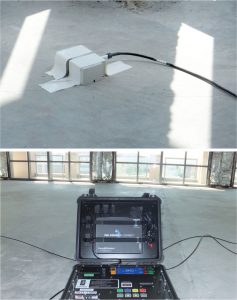Building Structural Monitoring
Codes of practice and standards for structural design have traditionally been regarded as the ultimate security for making sure that structures comply with requirements for safety. The advent of new technology and higher computing power allows engineering design to be supplemented by measurements of the actual performance of a structure during and after construction. This would allow for feedback to validate whether buildings are built as intended and to determine if existing buildings have acceptable levels of capacity. If done on a broad level, it would give insight into community resilience and ultimately allow poorly performing buildings to be identified prior to shock events.
As buildings are subjected to storms, earthquakes, and natural events, tracking degradation is also critical to understand the structure’s residual capacity, risk profile, and suitability for re-occupancy after natural events. In a few hours, an assessment from very small dynamic movements can be processed into a structure’s Dynamic Signature and yield a risk profile of the building. With cloud computing, this assessment is made in near real time after data is collected.
Using accelerometers that are extremely sensitive, it is possible to use low amplitude excitation from natural sources (such as wind or traffic) to obtain information about the in-service performance of the structure. This analysis of tiny movements is analogous to the use of an electrocardiogram to judge the state of health of a human heart. The measurements at low amplitude allow for a prediction of the response at high amplitudes, which is where damage can occur. A recent award-winning paper issued by ASCE (Spence and Kareem) gives a detailed explanation of the predictable nature of non-linear damping, allowing for extrapolation of low values of damping to higher values. The paper summarized decades of international research on the topic of non-linear damping, providing a fundamental understanding of the previously poorly-understood mechanism. This understanding, applied appropriately using classic structural dynamic analysis, becomes a powerful tool to compare all structures with the code under which they were built, as well as to each other, based on their measured response and associated risk profile. The measurements not only give a direct measure of the capacity of the structure but also identify the presence of any anomalies or weaknesses and their location. The techniques and analysis have been used on buildings in the U.S., Australia, New Zealand, and other countries to support decisions about the viability of continuing to use a building, what repairs/improvements need to be made, and even whether construction work is safe to continue.
Already, this approach has been used extensively and has identified a building in an earthquake zone that had damage in areas hidden from sight. In this example, 10 buildings of various design types, heights, construction quality, and uses were measured, and the response of each was put into a bell curve based on their relative risk profile to compare each structure based on both their risk and the local codes. One building was identified as an ‘outlier,’ which under any design criterion was substandard. It had been damaged mildly in several earlier earthquakes, but the damage was covered cosmetically. Using classical engineering techniques, investigators could not identify its fundamental weaknesses; however, the objective measurements clearly identified the weakness as well as the location of damage.
In another example, the techniques were used to give assurances that a school building’s newly developed cracks were merely cosmetic and did not pose a risk to the children. Also, the techniques were used to modify a proposed addition to the roof of a kindergarten to allow safe working loads where no existing drawings were available.
The technology is also applicable to work under construction. It has been used by a piling contractor to avoid costly stop-work orders by giving near real-time feedback about the acceleration and vibration effects of the pile installation on adjacent buildings. The baseline behavior of the existing buildings was also established as a reference, before the pile driving began, to compare with the condition after construction. In another case, the technology was used to modify the approach to demolition or nearby blasting very close to an adjacent structure. The baseline measurements showed the adjacent structure had an unusual type of behavior in which a resonance-on-a-resonance type of response was probable. When this type of condition occurs, the response of a structure can increase dramatically. The modifications included raising the elevation of soil berms intended to catch the structure being demolished, therefore reducing the impact forces.
In all instances, the objective capacity-related measurements were critical to engineers to give them actual performance measurements, in addition to engineering judgment. The measurements proved critical and allowed the engineers to provide the best service to their customers.■
Reference
Tall Buildings and Damping: A Concept-Based Data-Driven Model, Seymour M. J. Spence and Ahsan Kareem, A.M.ASCE2

